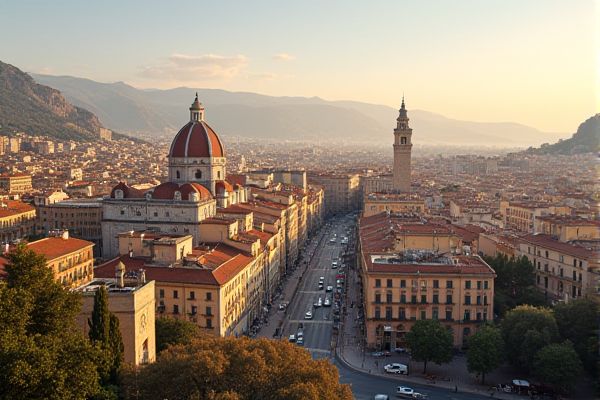
What to know as new resident in Spain: Language: Primarily Spanish; regional languages exist. Currency: Euro (EUR). Healthcare: Universal coverage, register with local health center. Housing: Rental contracts vary; research neighborhoods. Public Transportation: Extensive train, bus, metro options. Spanish Siesta: Afternoon break, affects business hours. Cultural Etiquette: Politeness, personal space, dining customs. Taxation: Register for NIE, understand tax obligations. Cost of Living: Urban areas typically higher expenses. Climate: Varied; Mediterranean and continental influences.
Language: Primarily Spanish; regional languages exist.
As a new resident in Spain, you should know that Spanish (Castilian) is the official language spoken throughout the country, while regional co-official languages include Catalan/Valencian in Catalonia, the Balearic Islands, and Valencia, Galician in Galicia, Basque in the Basque Country and northern Navarre, and Aranese Occitan in the Aran Valley.
Currency: Euro (€).
In Spain, the Euro (EUR) is the official currency, represented by the symbol EUR and the initials EUR. Euro notes range from EUR5 to EUR200, with each note having a distinct size and color, and coins feature images of Spanish culture and influential leaders. For more detailed information about living in Spain, including currency and language, you can visit the Navsea Navy website.
Healthcare: Universal coverage, register with local health center.
To access Spain's public healthcare system as a new resident, you must register with your local health center by providing proof of residency, a Spanish social security number, and identification documents. Following this, you can apply for a Tarjeta Sanitaria Individual (TSI) health card. This card grants access to universal healthcare services, including emergency care, surgeries, and primary healthcare. For detailed guidance on navigating this process, visit the Spain Healthcare System page.
Housing: Rental contracts vary; research neighborhoods.
In Spain, there are three main types of rental contracts: residential, seasonal, and commercial premises, each with its own legal implications and requirements, such as the duration of the lease, rent, and responsibilities for repairs and maintenance. When finding housing, it is crucial to research neighborhoods and understand the local Real Estate Market to make an informed decision.
Public Transportation: Extensive train, bus, metro options.
Spain offers an extensive public transportation system, including a vast high-speed rail network, commuter rail (Cercanias), metro systems in major cities like Madrid, Barcelona, and Bilbao, and comprehensive bus services both within cities and for intercity travel. Various apps and resources are available for planning and booking trips, making it easy for residents and tourists alike to navigate the country efficiently. For more detailed information on navigating the public transport in Spain, visit the Comprehensive Transportation Guide.
Spanish Siesta: Afternoon break, affects business hours.
In Spain, the siesta is a mid-afternoon break, typically lasting from 1:30 PM to 4:30 PM or 5:00 PM, allowing employees to rest and recharge. This tradition affects business hours, with many shops, restaurants, and offices closing during this period, and the workday often split into two parts: morning to early afternoon and late afternoon to evening. For a deeper understanding of this unique practice and its implications on professional and personal life, explore more about the Work-Life Balance in Spain.
Cultural Etiquette: Politeness, personal space, dining customs.
In Spain, cultural etiquette involves using formal titles like Don/Dona or Senor/Senora for older or formal situations, maintaining eye contact and avoiding personal space, and adhering to dining customs such as waiting to be seated, keeping hands visible, and not wasting food. Mealtimes are social and often late, with dinner typically starting between 21:00 and 22:00, and it is customary to engage in conversation and stay for La Sobremesa after the meal.
Taxation: Register for NIE, understand tax obligations.
To register for an NIE in Spain, you need to fill out the EX-15 application form, gather necessary documents including your passport, proof of entry, and a certificate of residence, and submit them at a scheduled appointment. As a tax resident in Spain, it is important to be aware that you are required to file an annual tax return declaring your worldwide income if you spend more than 183 days in the country. For detailed guidance on this process, visit NIE Numero De Identificacion De Extranjero Spain to assist in ensuring compliance with Spanish regulations.
Cost of Living: Urban areas typically higher expenses.
In Spain, urban areas such as Madrid and Barcelona have significantly higher expenses compared to rural areas, particularly in housing, with rents ranging from EUR400 in smaller towns to EUR1,500 in major cities, alongside increased costs for food and entertainment. For a deeper understanding of these differences, you can explore the Cost of Living in Spain on SpainEasy. This comprehensive resource highlights the stark contrast between urban and rural living expenses, providing valuable insights for those considering relocating to this vibrant country.
Climate: Varied; Mediterranean and continental influences.
Spain's climate is highly diverse, influenced by its location near the Atlantic Ocean and North Africa, resulting in a mix of Mediterranean, continental, and mountain climates. The country features hot-summer Mediterranean climates along the coast, semi-arid climates in the southeast, and oceanic climates in the northwest, with significant regional variations in temperature and precipitation. For more detailed information about these variations, visit the detailed article on Spain's Climate on Britannica.
